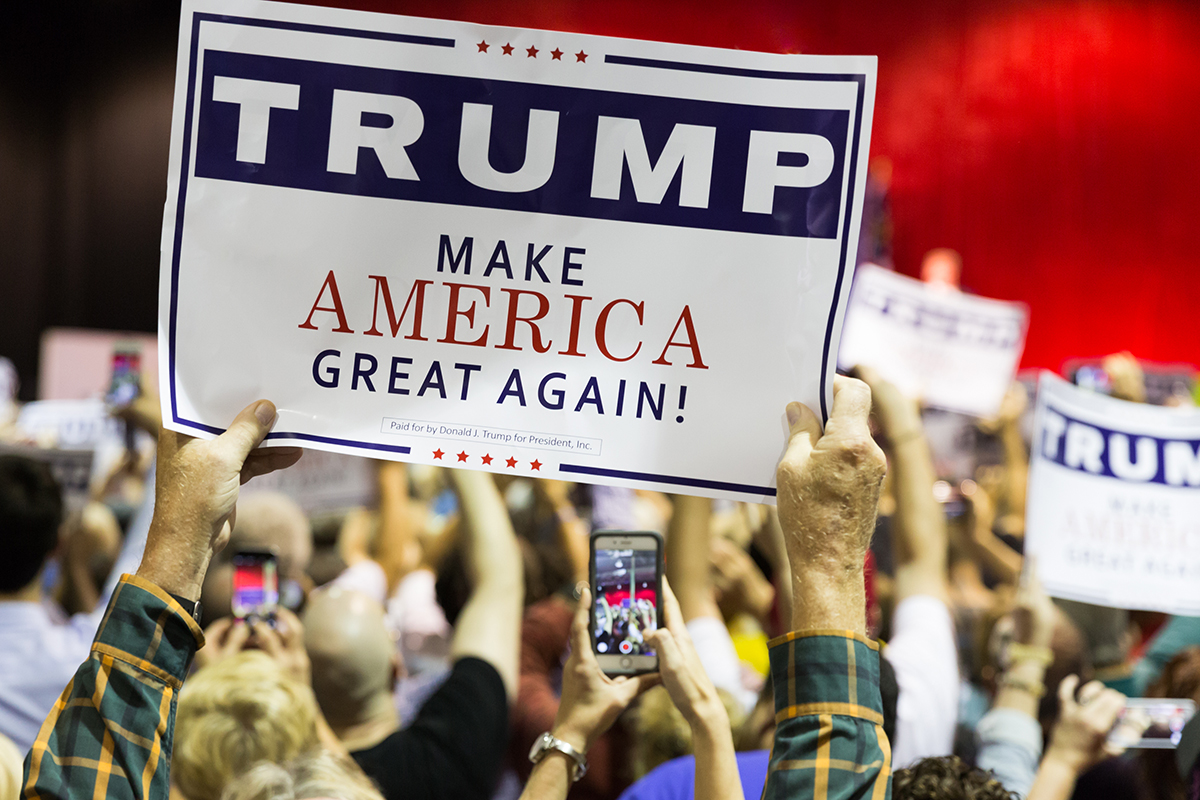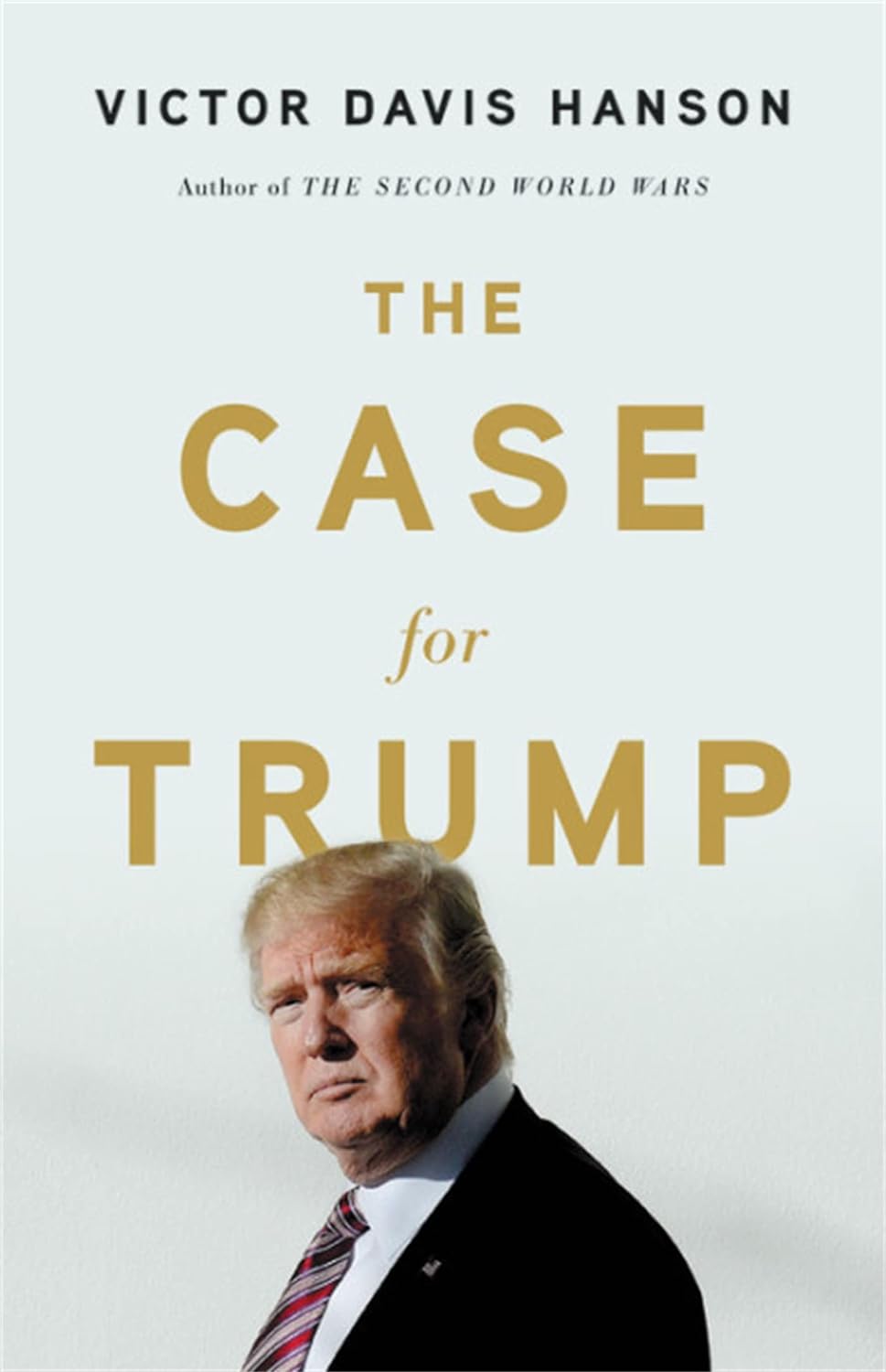book review
Timely Return to Battle for a Veteran of the Culture Wars
While Hanson is good in setting out the causes of Trump’s victory, he falls short when it comes to making recommendations for the future.

A review of The Case For Trump by Victor Davis Hanson. Basic Books, Hard Cover (March 2019).
“I too grew up, and still live, outside a small town in California’s Central Valley,” Victor Davis Hanson writes, in his new book The Case For Trump. “For a century (1880–1980) it was a prosperous multiethnic and multiracial community of working- and middle-class families. By 2010, high unemployment was chronic, drug addiction was endemic, crime commonplace. In 1970, we did not have keys for our outside doors; in 2018, I have six guard dogs.”

Hanson remains one of the rare prominent writers and theorists to throw his intellectual weight behind the new conservatism that is taking shape across the Anglosphere and broader West since the twin victories of Brexit and Trump in 2016. While there have been recent attempts from both conservative (Legutko, Hazony, Mearsheimer) and liberal(ish) perspectives (Deneen, Goodwin and Eatwell, Walt) to explain what went wrong, Hanson’s latest refers more specifically to the social conditions in the United States. It is also very different from the works of scholarship he is known for. Hanson is one of the world’s pre-eminent scholars of classics and military strategy, and his last book, The Second World Wars (2018), which I reviewed for the Royal Institute of International Affairs, remains peerless in its thematic analysis of history’s most devastating conflict to date. But his new book addresses a distinctly modern phenomenon, namely the rise of Donald Trump. Its misleading name notwithstanding, the majority of the book focusses on the social forces behind Trump’s first success rather than making the case for his re-election.

Hanson suggests that these social forces are nothing new. “Middle-class populism—less government, doubt over overseas military commitments, fears of redistribution and globalization, and distrust of cultural elites—was as old as the Athenian landed revolutionaries of 411 BC,” he writes. But what changed is the spread of this populism to the working class, something the Left, with its urban bubbles and intersectional dogmas, failed to foresee. “In the 1990s, an array of issues such as the post-industrial and global economy, illegal immigration, and the Democratic monopolies of big-city mayorships split the country apart along new regional lines,” Hanson writes, indicating that it all started during Bill Clinton’s presidency. “[The Democrats] were content to let the labor market, not existing law, adjudicate border crossings. Prior and rather pathetic Republican efforts to go soft on immigration were predicated on outdated stereotypes about ‘family values.’ Spanish-speaking immigrants from Mexico and Latin America, if amnestied, supposedly would vote as if they were third-generation middle-class Cuban Republicans, even as open borders allowed hundreds of thousands of new arrivals to enter the United States illegally from Mexico and Central America.”
Immigration is the key theme in Hanson’s book—the word itself appears well over a hundred times. Hanson points out that immigration was not always a right-wing concern. In fact, it has traditionally been a section of the capitalist Right which has espoused labor mobility and the Left was usually opposed to it. “Even Barack Obama, an old laborite community activist, as late as 2008 had campaigned on enforcing immigration law,” he writes. “During his first four years as president, Obama had reiterated (twenty-two times, to be exact) to mostly Latino pressure groups why he could not provide them with blanket amnesties and open borders: ‘I am president, I am not king. I can’t do these things just by myself.’” Indeed, Obama’s own words on immigration—“Do not send your children to the borders. If they do make it, they’ll get sent back”—were indistinguishable from Hillary Clinton’s: “We have to send a clear message, just because your child gets across the border, that doesn’t mean the child gets to stay.” Bernie Sanders was castigated by the liberal left for saying that open borders are a Koch brothers’ plan (nonsense, obviously), which places him at odds with some of the other Democratic Presidential hopefuls who say they want to abolish Immigration and Customs Enforcement and tear down existing borders. The Right, by contrast, has turned Laschian. The phrase “illegal alien” has become “illegal immigrant” and “undocumented immigrant” has become “undocumented migrant.”

However, Obama failed to end illegal immigration. “I will secure the borders first, and I will have the border states’ governors certify that those borders are secured,” he promised during his 2008 campaign. That didn’t happen, and neither did many of the other “tough” measures he proposed. The backlash to those broken promises forms the core of this book. Hanson sums up:
[The Democrats’] free-market dogmas offered answers to far wider social and cultural questions, from immigration and the role of government to education and defense. Summed up brutally, it meant that for the market to enrich society, champion the individual, and protect liberty, there would have to be short term winners and losers—players who were constantly engaged in a cauldron of modification, rejection, and adaptation of their very lives. Nothing was static; nothing sacred.
This is the cause of the Right turning against the Republican establishment, according to Hanson. Because, traditionally, conservatism isn’t about the market, but about prudence, restraint, and realism, the erosion of nationalistic conservatism by neoliberals pretending to be conservative deserved a backlash. “If preserving the linchpin steel mill of the community meant 10 cents more in the price of steel per pound over competing South Korean imports, then such an iconic plant needed to rust away,” he writes. The masses didn’t want that. And they rebelled. In the most ironic twist, it was the conservatives who were the radicals in 2016 and the erstwhile sixties radicals who were trying to preserve the market’s dominance. As conservatives in the Anglosphere looked back to Teddy Roosevelt, liberals and leftists had more in common with the libertarian economist Murray Rothbard. As is generally the case, the masses do not care about the messenger as long as the message is what they want to hear. “The Trump base had no such moral dilemmas over Trump the messenger as did the Never Trumpers,” writes Hanson. “As we have seen, they believed that no other Republican or Democratic candidate could have been trusted to address illegal immigration, deindustrialization, and globalization, and to adopt pro-jobs economic and Jacksonian foreign policies. They could not have cared less that Trump…had a sordid dalliance with Stormy Daniels a decade earlier.” Trump in this respect is a tragic hero, according to Hanson, uniquely unsuited and unprepared for the role that destiny has bestowed on him.
The book is far from perfect. I looked for some nuance in the immigration segment and found none. While Hanson is good in setting out the causes of Trump’s victory, he falls short when it comes to making recommendations for the future. He doesn’t take into account the difference between Cuban-Americans, who are staunchly Republican, pro-free market, and socially conservative, and Mexican-Americans, who are mostly leftist. Hanson also doesn’t address the low caliber of black and minority ethnic Republic politicians. Ilhan Omar and Ayaan Hirsi Ali are both Somalian refugees, and it is the ultimate failure of Republicans to not find someone of Hirsi Ali’s intellectual weight to counter Omar. Rashida Tlaib, a Democrat congresswoman, proudly proclaims herself to be a Palestinian. Why hasn’t an ethnic minority Republican of a similar stature challenged the narcissistic liberal individualism which has led to the rise of Islamist terrorism in Europe and the U.S., which attracts jaded second-generation children who don’t feel any loyalty to the land beneath their feet? Why aren’t there more black Republicans willing to make the case for nationalism as a counterweight to sectarianism? It’s not as if there is a shortage of success stories. For every MS-13 gang member, or ISIS wannabe, there are thousands of individuals like Maria Rivas, who made America their home and are potential allies in the patriotic cause.
Maybe Hanson could focus on this in his next book. Nevertheless, this book is a necessary corrective to the center-right, neo-liberal dogma of the last quarter century. To crudely paraphrase David Frum, if liberals and conservatives do not take control of mass immigration, the public will elect authoritarians to do the job because the job needs to be done. At the time of writing, the states along the southern border are overwhelmed, with over 75,000 migrants crossing the border in one month alone. That’s the population of a medium-sized town. Hanson is an old warrior, who has repeatedly written about the corruption of institutions and has been at the forefront of the culture wars, and he is a fine scholar. This is a timely warning that conservatives who ignore the laws of nature in favor of the laws of the market are doomed to electoral oblivion.






